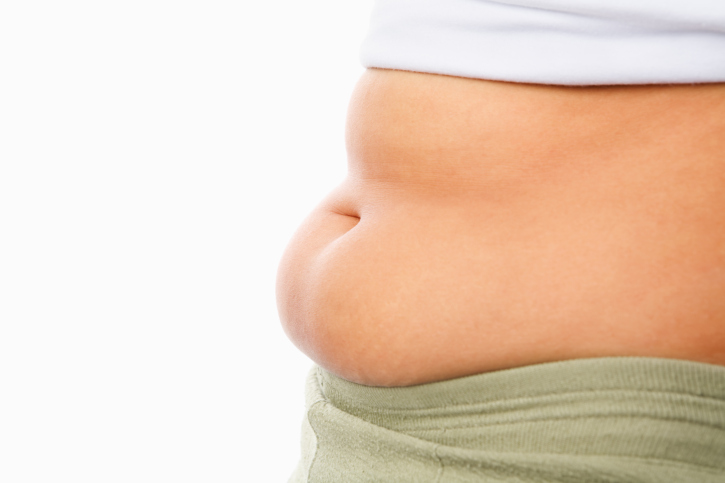
Stubborn Belly Fat
Belly fat – we all know the term, and many of us struggle with it. But have you ever wondered how it actually develops, and why some people accumulate more fat in the abdominal area than others? This blog explores the biology of belly fat, its types, contributing factors, and what makes it such a common health concern.
🔬 The Biology of Belly Fat
Fat in the human body is stored in adipose tissue. This tissue can be found all over the body, but when it’s concentrated in the abdominal area, it’s commonly referred to as belly fat. There are two main types of fat in the belly:
1. Subcutaneous Fat
- Located just beneath the skin.
- Soft and pinchable.
- Less harmful, but still affects appearance and mobility.
2. Visceral Fat
- Stored deep inside the abdominal cavity.
- Surrounds internal organs like the liver, pancreas, and intestines.
- More dangerous – linked to heart disease, type 2 diabetes, and insulin resistance.
⚙️ How Belly Fat Grows: Step-by-Step
1. Excess Calorie Intake
When you consume more calories than your body needs for energy, the extra energy gets stored as fat. If this continues over time, fat accumulates – especially around the belly.
2. Fat Storage Preference
The body distributes fat based on genetic, hormonal, and lifestyle factors. Some people are predisposed to store more fat around their midsection.
3. Insulin Resistance
If your cells don’t respond properly to insulin, blood sugar levels rise. The body stores this excess sugar as fat, especially visceral fat.
4. Hormonal Imbalances
Hormones like cortisol (the stress hormone) and estrogen/testosterone can influence where fat is stored. Elevated cortisol levels are strongly linked to increased belly fat.
5. Slower Metabolism
With age, the metabolism slows down, and the body burns fewer calories. Combined with inactivity and unchanged eating habits, this leads to fat accumulation in the belly.
🧪 Key Reasons for Belly Fat Accumulation
Let’s break down the most common causes in more detail:
1. Poor Diet
- High sugar intake: Sugary foods and drinks (like soda and desserts) spike insulin levels and promote fat storage.
- Refined carbs: White bread, pastries, and processed snacks have a high glycemic index, leading to overeating and fat storage.
- Low protein and fiber: Protein helps regulate appetite, while fiber slows digestion and reduces hunger. A lack of both can lead to weight gain.
2. Lack of Physical Activity
Sedentary lifestyles reduce calorie burn, leading to an energy surplus. Without regular exercise, especially strength and cardio training, the body is more likely to store fat.
3. Stress and Cortisol
Chronic stress increases cortisol levels, which can boost appetite and cravings for comfort food. Cortisol also encourages fat storage around the belly.
4. Sleep Deprivation
Not getting enough sleep can:
- Disrupt hormones (ghrelin and leptin) that regulate hunger.
- Increase cravings for high-calorie foods.
- Lower energy levels, making you less likely to exercise.
5. Alcohol Consumption
Excessive drinking contributes to “empty calories” and disrupts fat metabolism. It’s linked to abdominal obesity – hence the term “beer belly.”
6. Age and Genetics
- With age, people lose muscle mass and gain fat more easily.
- Genetics also play a role – if your parents carry weight around their midsection, you’re more likely to as well.
🚨 Why You Should Be Concerned About Belly Fat
Unlike fat in other parts of the body, visceral fat is metabolically active and produces inflammatory substances. It’s been strongly linked to:
- Heart disease
- Type 2 diabetes
- High blood pressure
- Certain cancers
- Fatty liver disease
✅ How to Combat Belly Fat
While spot-reducing fat isn’t possible, consistent lifestyle changes can reduce belly fat effectively:
🔹 Eat a Balanced Diet:
- High in protein, fiber, healthy fats
- Low in added sugars and refined carbs
🔹 Exercise Regularly:
- Combine cardio (like walking, running, or swimming) with strength training.
- Aim for at least 150 minutes of moderate exercise per week.
🔹 Manage Stress:
- Try yoga, meditation, deep breathing, or hobbies that help you unwind.
🔹 Prioritize Sleep:
- Aim for 7–9 hours of quality sleep per night.
🔹 Limit Alcohol:
- If you drink, do so in moderation.
🧠 Final Thoughts
Belly fat doesn’t just affect how your clothes fit – it’s a key indicator of your overall health. While gaining fat around the midsection is common, especially with age or stress, it’s also highly manageable with the right habits. By understanding how and why it grows, you can take informed steps to reverse it and improve your long-term well-being.



